Canon RF 14-35mm f/4 review: wider and more affordable
Quite possibly the perfect ultra-wide angle, variable zoom lens for landscape, real estate and interior photographers

The Canon 14-35mm f/4 L is a variable zoom, ultra-wide angle lens designed for full frame, Canon RF mount mirrorless cameras. It weighs just over a pound, has auto focus, optical image stabilization, a programmable control ring, weather sealing, and a constant, maximum aperture of f/4 throughout its focal length range.
- Wide range of variable focal lengths
- Circular filter thread, works with standard filters
- Optical image stabilizer
- Compact form factor
- Solid image quality and sharpness
- More affordable RF wide angle variable zoom
- Heavy distortion at widest focal lengths that crops focal length
- Modest f/4 aperture
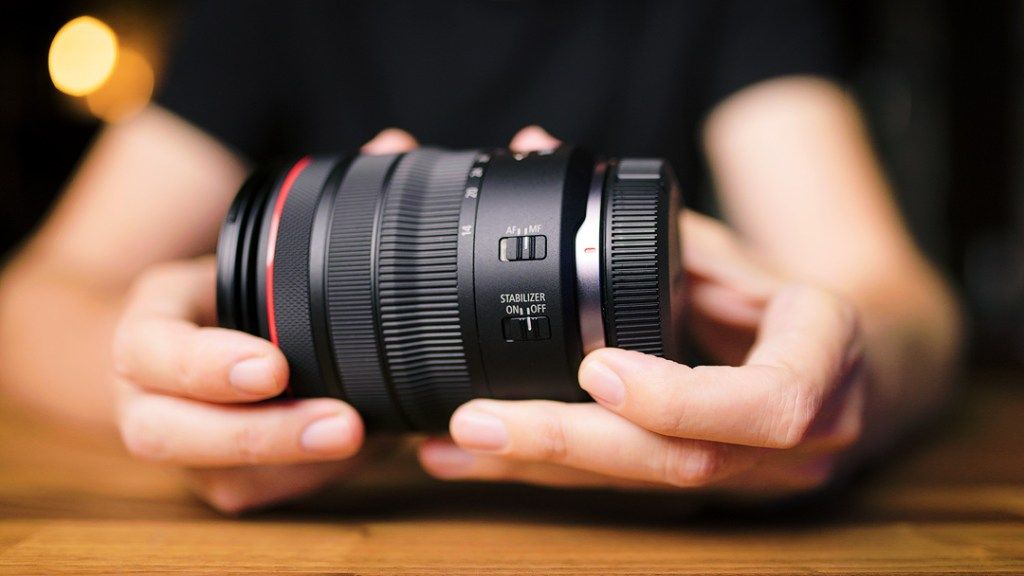
Its modest f/4 aperture makes the RF 14-35mm smaller and more affordable compared to Canon’s other RF wide angle variable zoom, the RF 15-35mm f/2.8. It also makes this lens particularly well-suited for landscape, architecture, interior, and real estate photographers who don't typically need larger apertures.
The overall build quality of the RF 14-35mm is exactly what you expect from a Canon L-series lens. It’s lightweight, yet doesn’t feel cheap or plasticky. The whole lens has a more tight, polished design than Canon’s older EF lenses.
Focal length
This RF 14-35mm is a bit of a surprise in Canon’s RF lens lineup. Instead of releasing a more affordable, f/4 version of the aforementioned RF 15-35mm that came out back in 2019, Canon designed a new lens with an even wider maximum focal length of 14mm. That technically makes this an “ultra” wide angle lens.
Numerically speaking, the difference between 14, 15, and 16 may not sound like much, but at the low end of the scale, each additional millimeter has a pronounced effect on field of view.


Which means, for some photographers, this 14-35mm may be the only wide angle lens you need because its focal length encompasses such a broad range. Everything from ultra-wide to wide to standard.
The barrel extends externally when changing focal lengths. Fully extended at 14mm and 35mm, the lens maintains its small size. The design here is really nice because it keeps the lens small and compact throughout the entire focal length range. This is especially noticeable when shooting handheld, for the lens doesn’t get top heavy when extended. It’s light and comfortable to carry around.
Using filters
The front of the RF 14-35mm is flat, with a 77mm thread for mounting circular filters. This is unusual and exciting, because circular filters have traditionally been incompatible with full-frame, ultra-wide angle lenses (eg, the Sigma EF 14-24mm) due to their bulbous glass design.
With the 14-35mm however, you may mount circular filters – perhaps filters you already own – and shoot ultra-wide at 14mm without specialized filters or hardware. This is the feature I was most curious about because circular filters can add mechanical vignette with full frame lenses at focal lengths wider than 16 or 17mm.
Let’s look at some example images. To begin, here is a straight-out-of-camera, non-corrected RAW image from the 14-35 shot at 14mm without a filter. As you can see, there’s quite a bit of optical vignette at this focal length, which is normal for an ultra-wide focal length like 14mm.
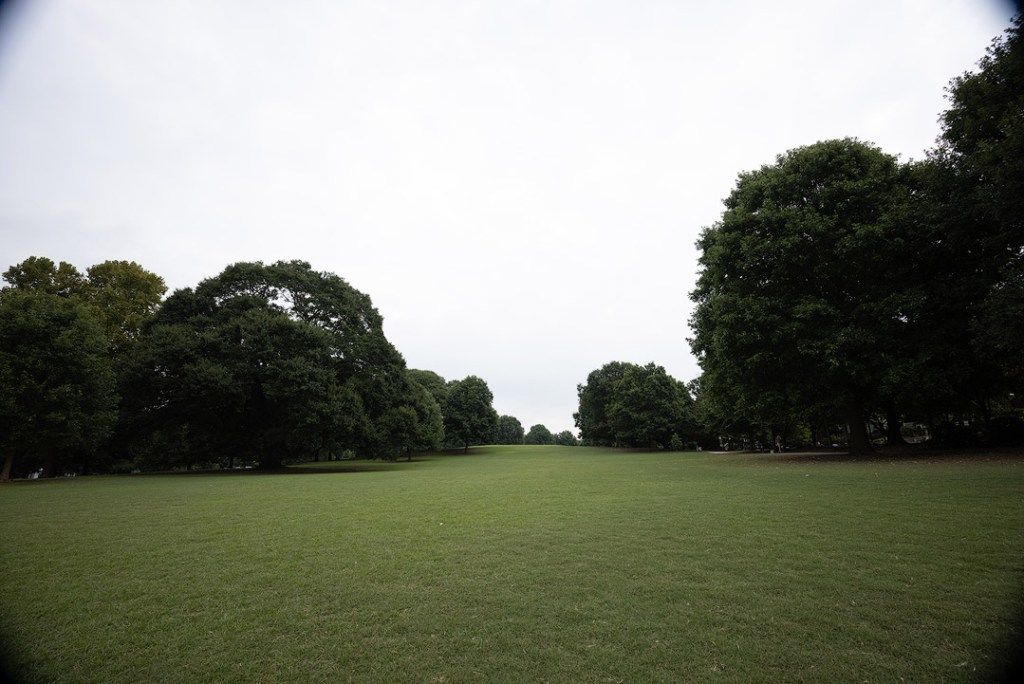
And now this is with a 77mm circular filter mounted to the front. The corners and edges of the RAW image are now even darker because the filter is blocking light and adding mechanical vignette on top of the optical vignette.
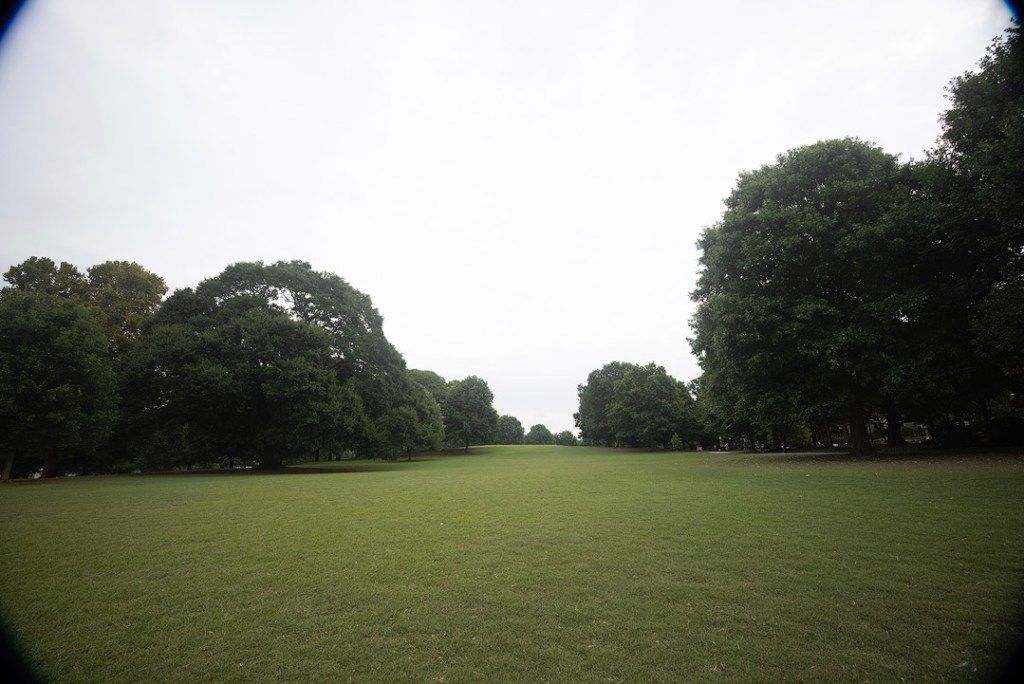
When lens corrections are applied (using Adobe Lightroom Classic), all vignette is removed from both images (see below).
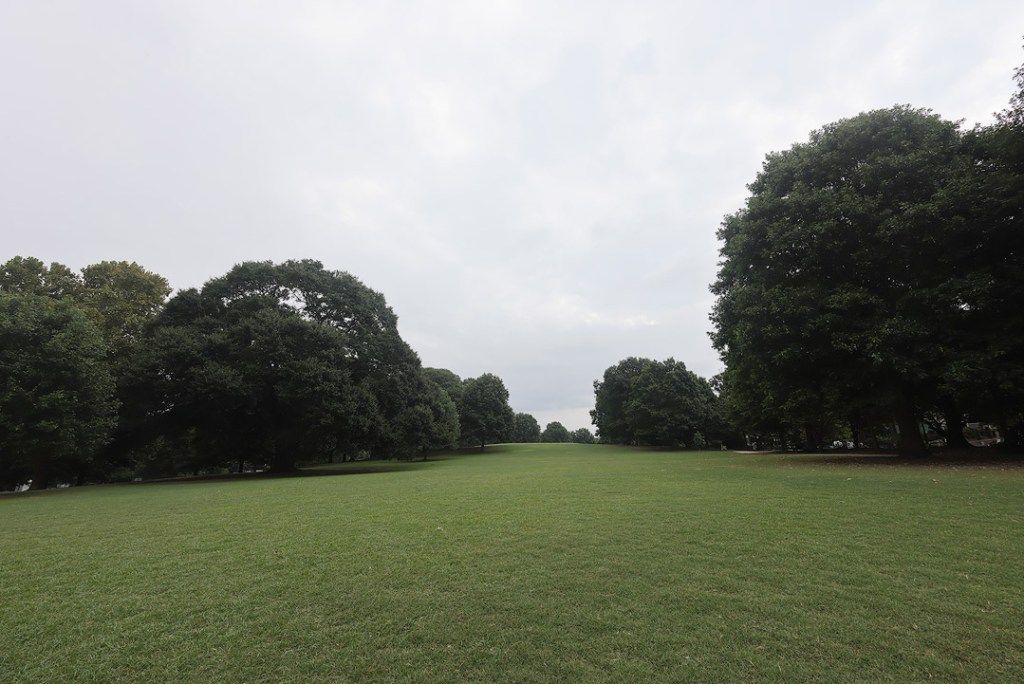
The reason vignette is no longer a problem is because the edges and corners of the RAW image are pulled forward and cropped when barrel distortion is corrected.
What this means in practical use is that landscape, outdoor and architectural photographers should be able to mount “normal” circular and square filters and shoot ultra-wide at 14mm without worrying about vignette (after lens correction profiles have been applied).
For me and the type of work I do, that’s fantastic news. I’ve always wanted to shoot wider than 16mm, but never wanted to buy additional lenses and different filters in order to do so.
Image quality
Now let’s take a look at image quality. For this, I’d like to start by comparing the 14-35mm to a similar, older lens, the Canon EF 16-35mm f/4. To my eyes, color is slightly richer on the 14-35mm, contrast is a bit punchier, and detail is sharper and clearer.

It’s not a huge difference because the EF 16-35mm has always been an excellent lens, but if you pixel peep and look at the edges of lines and areas of contrast, you can definitely see the difference. The 14-35mm has cleaner separation and more detail.
Also interesting, focal lengths between these lenses are not directly equivalent. For example, this is 35mm on the 14-35mm…and 35mm on the 16-35mm. All focal lengths on the 14-35mm have a slightly wider field of view in comparison.
Next let’s take a look at the corners. Corner detail is typically softer when shooting wide angle on any lens, and that’s also true with the 14-35. That said, corners are handled quite well, with nice sharpness and detail after Canon’s lens correction profiles have been applied.
As for bokeh and shallow depth of field when shooting at f/4, the following image is from 4K video shot at 35mm with the aperture wide open at f/4.
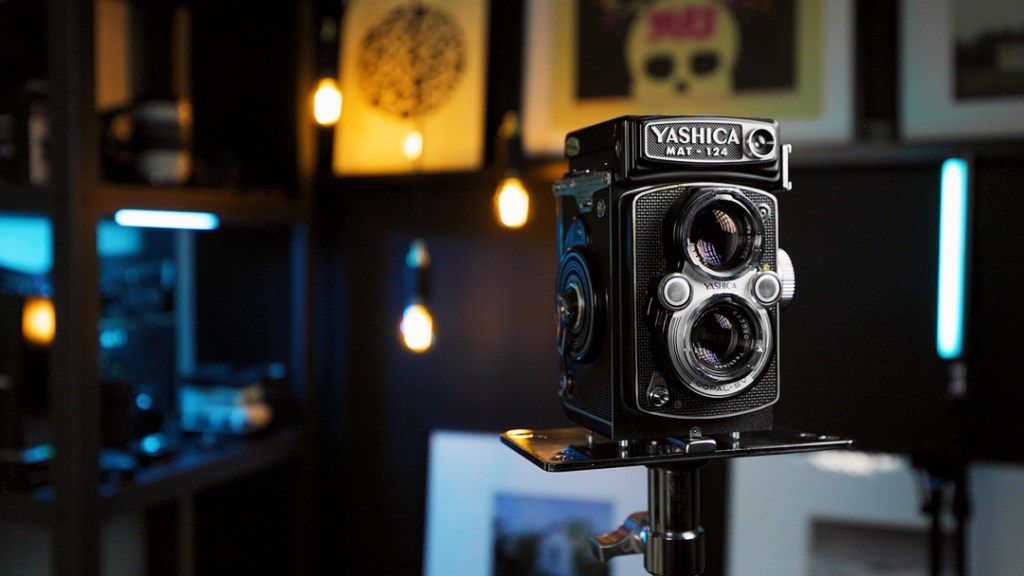
This is where the limitations of this lens come in. The background behind the subject looks fine. There’s nothing technically wrong with it, it’s just that the depth of field isn’t as blurry or cinematic looking as it could be if this lens supported a larger maximum aperture.
Image stabilization
The RF 14-35mm f/4 has optical image stabilization that may be turned on and off through a switch on the lens. Canon claims you will get 5.5 stops of correction when using this lens on the EOS R and RP, and up to 7 stops when using the Canon EOS R5 and R6.
Those newer cameras produce better results because they have an in-body image stabilization system that works in tandem with the optical image stabilization in the lens.
But what does “7 stops of correction” actually mean from a practical perspective?
To test image stabilization, I used my R5 handheld, and shot a series of images with and without image stabilization. This type of test isn’t an exact science, but it should demonstrate whether image stabilization makes a difference.
To start, I set shutter speed to 1/60 second, turned image stabilization off, then incrementally slowed the shutter speed down until there was a noticeable drop in sharpness. Then I turned image stabilization on, repeated the process, and compared the results.
With image stabilization off, sharpness quickly dropped off a cliff at 1/30 second. That image (and all subsequent images) were blurry and unusable.


With image stabilization turned on, sharpness wasn’t a problem until my shutter speed reached 1 second. At that point the image started to blur and blow out because aperture and ISO values were maxed out.


That’s a difference of 5 stops. That’s less than Canon’s claim of 7 stops, but it’s fine. In practical terms, image stabilization produces better low-light performance and sharper images when shooting handheld on the RF 14-35.
Focusing
The 14-35mm has a USM autofocus system that is quick and responsive on both the R5 and the R6. Focusing feels confident, and rarely hunts or has problems locking onto a subject. As long as the subject is at least 7.9 inches or more away, autofocus performs well. Its minimum focusing distance (7.9 inches) is over 3 inches closer than the EF 16-35mm f/4, which is a very nice improvement.
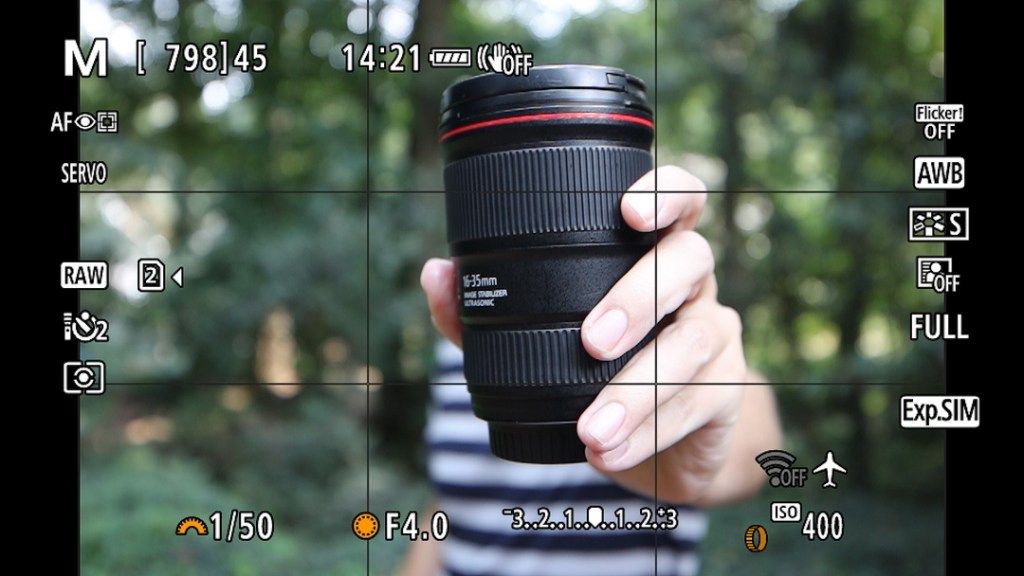
As for video, autofocus performs just as well, but focusing (thankfully) engages and shifts more slowly to appear natural and less jerky.
When autofocus is turned off, the manual focus ring is smooth, but it is thin and positioned closer to the variable zoom ring than I’m accustomed to. It’s the kind of thing that may require practice when shooting handheld if you are accustomed to older EF lenses with larger rings.
As for the autofocus motor inside, focusing is whisper quiet. It’s virtually silent. This is great news for videographers because the lens will contribute little-to-no noise when shooting with a live microphone.
Another thing videographers will notice when shooting video is the exceptional focus breathing when pulling focus manually. The field of view does not zoom or shift, which is fantastic. It looks very nice.
Should you buy it?
Overall, I think what Canon has built here is a compelling lens that gives legacy Canon shooters a reason to upgrade their camera bodies. If you want a lens with this focal length range and features, the RF 14-35mm is your only option. The lens cannot be used with older Canon DSLRs, nor can you buy an older, more affordable EF version of it.
The EF 16-35mm f/4 comes close, and would be a suitable substitute for less money, but that lens doesn’t get as wide, its image quality isn’t quite as good, and it is heavier and bulkier to carry – weighing nearly half-a-pound more when mounted with an adapter.
The other option is the RF 15-35mm f/2.8. It’s focal length is nearly the same – though not quite as wide – and it has a maximum aperture of f/2.8. I haven’t tested that lens, but it should perform better in low light and produce slightly better looking bokeh, though it does cost $700 more (at the time of this review).
Overall, it’s really a question of whether f/4 will be enough for you and the type of work you do and whether 14mm is more desirable than 15mm.
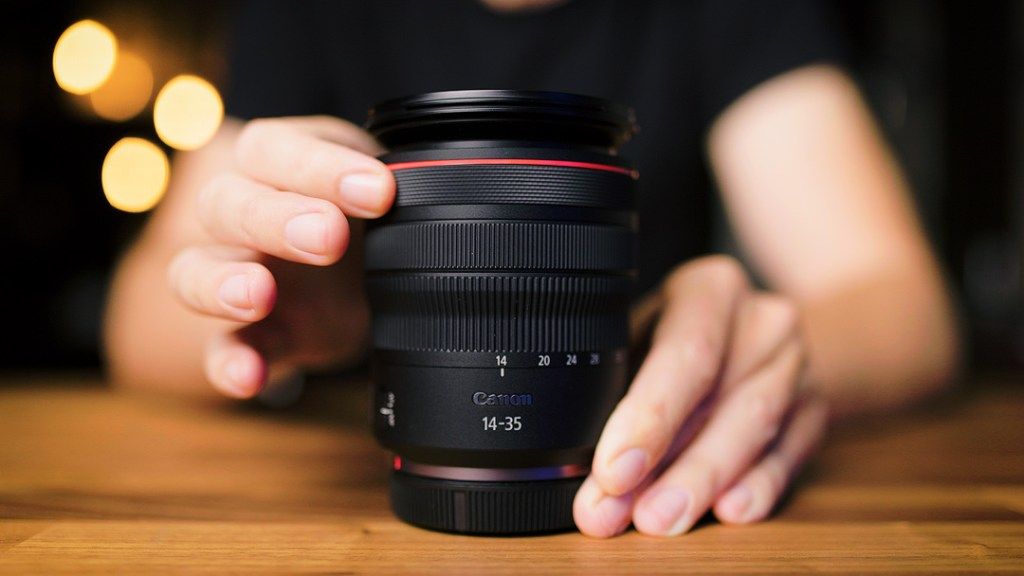
For me, at least right now, I’d rather save money and go with the RF 14-35mm because f/4 is perfectly fine for landscape work. I also typically shoot with a tripod at apertures like f/8 and f/11 for maximum depth of field and sharpness. If this lens had a larger maximum aperture than f/4, it wouldn’t make a difference for that type of work. It also wouldn’t make that much of a difference for architectural, interior and real estate photography where tripods are also commonly used.
But even without a tripod, I didn’t have that much of a problem when shooting handheld. I did have to sometimes bump ISO more than I would like just to make sure my shutter speed was fast enough, but the images typically turned out great thanks to image stabilization and the improved ISO performance of the R5 and R6. Overall, I doubt I could have captured the same quality of images using my old, non-stabilized Canon DSLR.
For video, the 14-35 is not the strongest, most cinematic-looking lens you can use, and the lens does need more light to achieve proper exposure in low light environments. But in general, it performs well – especially considering how quiet it is and how well it handles focus breathing.
The RF 14-35mm is currently priced (at the time of this review) at $1700. If that sounds expensive to you, I agree. Unfortunately, this is par for the course with Canon’s new RF lenses. Nearly all are more expensive than their older, EF counterparts.
But the question is, is it worth the money? Well, here’s one way of looking at it.
The 14-35mm is effectively two lenses in one body, because traditionally you’d have to buy a second ultra-wide angle lens to shoot wider than 16mm. So you’d need two lenses instead of one to cover the same focal length range. And then there’s the hassle of switching lenses and filters in the field while shooting.
Personally, I think the excellent vignette performance, expanded focal length range to 14mm, and superior detail and sharpness is worth paying extra for, and I’m excited to shoot more ultra-wide images with this lens in the future.
Check current price
To check the current price of the 14-35mm (and potentially purchase one for yourself), click the button below.
Video
Check out the video version of this review below.
Note: this review was updated in July, 2022 to reflect new lens correction profiles added to Adobe Lightroom



